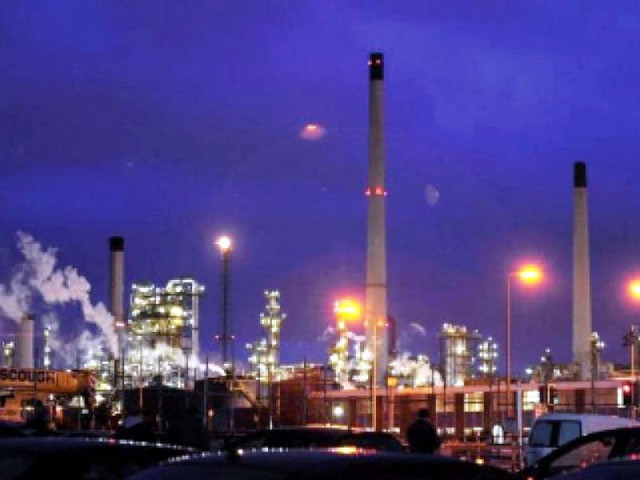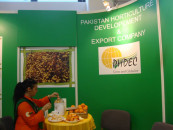Dealing with rising oil prices
Differential pricing, rationing are two possible tools to reduce impact of price surge

There is no increase in petroleum prices this time around, although crude oil prices have reached $90 per barrel.
The government has done away with GST on petroleum altogether and has maintained some petroleum development levy (PDL), which has made the status quo in prices possible.
The government will suffer a loss of Rs25-30 billion in its revenue. In the light of general inflation, the current oil prices have not been well received by the people at large.
Contrary to the popular discourse, Pakistan’s petroleum prices are still lower as compared to the regional prices, even the US prices probably.
Petroleum prices in India are more than 60% higher. Piped gas for the residential sector is 78% higher if compared to the highest gas price slab in Pakistan.
For the poor, Pakistan’s gas prices are several times lower than India; the latter does not offer any concession to the poor in this respect.
Only in the case of LPG, Indian prices are 74% that of Pakistan, ie 26% cheaper. Higher LPG prices, though, are due to market imperfections, which can be possibly corrected. India also offer 50% subsidy to the poor for one cylinder per month.
There is the spectre of oil prices touching $100 per barrel. This would create problems for the people as well as for the government in terms of subsidies and current account deficit.
Comparative oil prices
In South Asia, India’s petroleum prices are the highest – gasoline 73% higher and diesel 48%. In Bangladesh, gasoline prices are 30% higher and diesel 13%.
A common feature in South Asian pricing is lower diesel pricing either through subsidy or higher taxation.
Sri Lanka has the lowest price of diesel at $0.598 per litre in a selected group of countries, which is 23% lower than in Pakistan.
Sri Lanka is an outlier in the group. It has traditionally kept its diesel prices lower and the lowest in the region. There appears to be some subsidy involved in this respect.
It would be useful to examine the pricing behaviour in Southeast Asia where export promotion and competitiveness are major issues.
As expected, Vietnam’s diesel prices are 5% lower than in Pakistan and the lowest in Southeast Asia. Gasoline prices in this group are 30-50% higher than those in Pakistan.
While it is true that Pakistan’s petroleum prices are low and the lowest in the region, there is an income and affordability argument. One cannot meaningfully and rationally compare prices with richer countries. However, the argument cannot be taken too far.
Petroleum is mostly imported in Pakistan. The government is already suffering from the circular debt, caused by subsidies and lower prices of electricity and gas for the eligible low-income groups.
Additionally, gas tariff for fertiliser has been kept lower for keeping fertiliser prices low and thus low food prices.
The affordability issue has been caused by currency depreciation. While petroleum prices are low and reasonable in dollar terms, the same are high in terms of local prices.
The issue is common with inflation in other areas as well. Thus, it appears that there is very little space for manoeuvring in the area of petroleum pricing and taxation.
The solution lies elsewhere in economic growth, higher employment and wages, possible reduction in imports and increase in exports, which may keep the currency at a reasonable level.
Diesel prices vs gasoline
However, one correction may be worth consideration – pricing diesel lower than gasoline. Most countries in the world including Europe have kept diesel prices lower than gasoline.
The argument is that diesel is used in public and goods transportation. Thus, there is a welfare context and also cost competitiveness for keeping inflation low and for exports.
In Pakistan, we used to have the same sometime ago. However, environmental lobbyists, possibly under IFIs’ guidance, made us change the policy.
In Pakistan, prices of diesel and gasoline are kept same now. Perhaps, it is time to have a look at the issue in view of the current account deficit and inflation.
The opportunity to revise the policy would be when prices are lower and taxes are high, which may allow differentiation in taxes. At higher prices and lower taxation, such an opportunity does not exist.
Role of subsidies
International oil prices have touched the mark of $90 per barrel. Still bad news is that speculation is there that prices may reach or even cross $100 per barrel, although dates vary.
Some people predict the end of 2022 and some predict early 2023. The real question is what happens to Pakistan if oil prices go up to $100 and what we can do to deal with it.
Oil prices did go high to his level in the period 2011-2013. In the PPP government period, oil prices went as high as $97.98 in 2013 and remained above $94 throughout their period.
However, the exchange rate was lower in that period, which had a lesser effect on retail prices and inflation and on the economy in general. With the high rupee-dollar parity, the magnitude of the problem may be much more.
Let us hope that the worse does not happen. However, some risk management can be planned and done possibly. Preparedness reduces the pain and cost.
Supply is not in our hands but demand can possibly be somehow managed at least partly. Differential pricing and rationing are two possible tools.
New vehicles use better quality fuel. Older vehicles and motorcycles can use lower quality (eg lower RON) gasoline.
Low RON gasoline has been under discussion over the years as a welfare measure to help the lower classes using motorcycles and older vehicles not requiring the punch of high speed and acceleration, as required by the new vehicles used by the richer classes.
Rationing appears to be one of the tools, although higher prices may itself have a demand-influencing effect to some extent.
Demand reduction would not affect prices but would help deal with the current account deficit, which may have an impact on currency depreciation.
A 20% reduction through rationing may be feasible without causing much hardship and may save foreign exchange. We have experienced food rationing in yester years, although in the 1960s.
Some thinking, however, may be required for introducing oil rationing at some point during the current year. It can be implemented with more ease in these times of digitalisation than the flour and sugar rationing of yester years.
Among other measures is reserves management and monitoring but there is a limit to it, both physical and financial. Both supply and demand issues may have to be taken into account to reduce costs and other problems.
The writer is former member energy of the Planning Commission and author of several books on the energy sector
Published in The Express Tribune, February 7th, 2022.
Like Business on Facebook, follow @TribuneBiz on Twitter to stay informed and join in the conversation.



















COMMENTS
Comments are moderated and generally will be posted if they are on-topic and not abusive.
For more information, please see our Comments FAQ